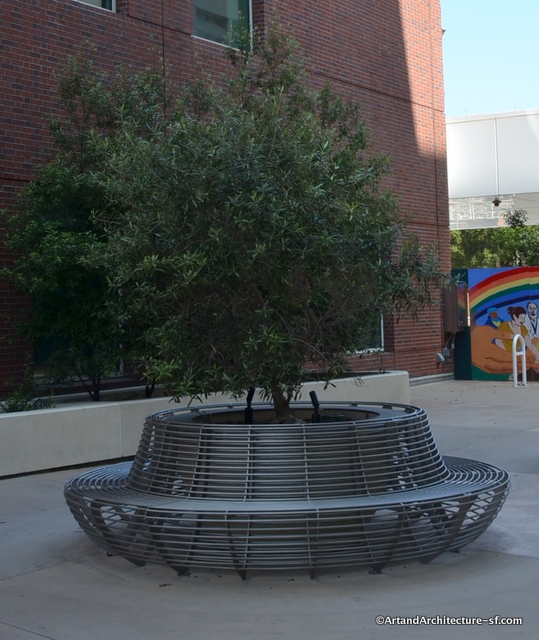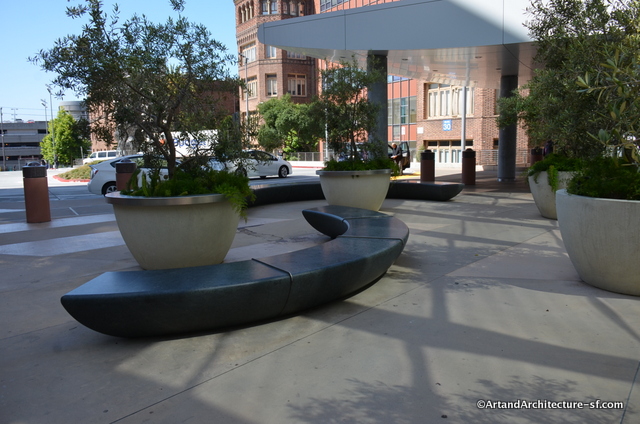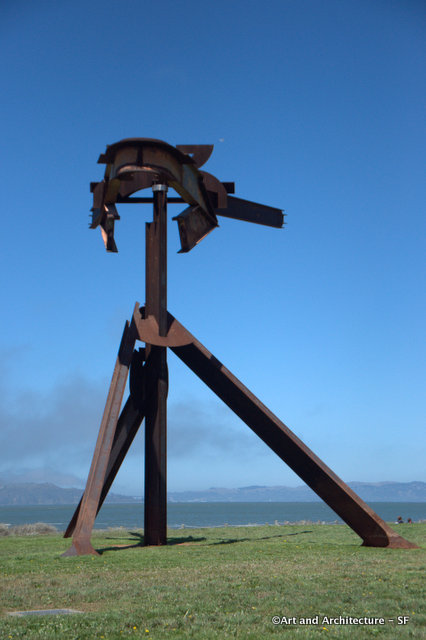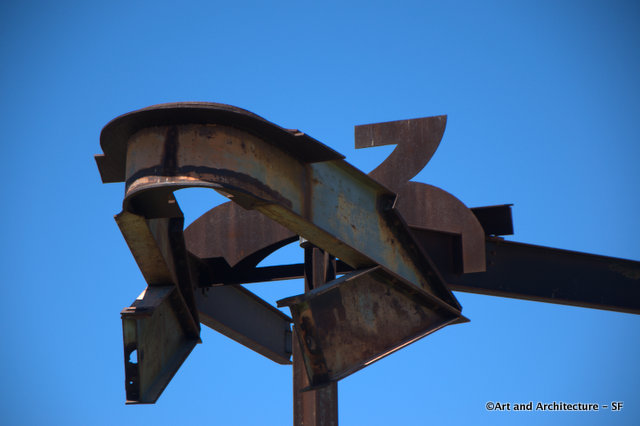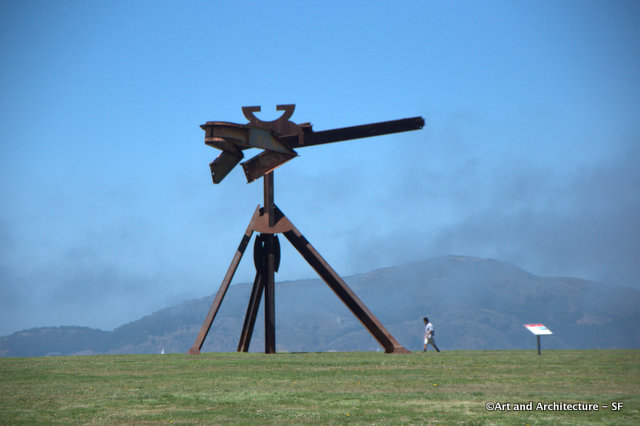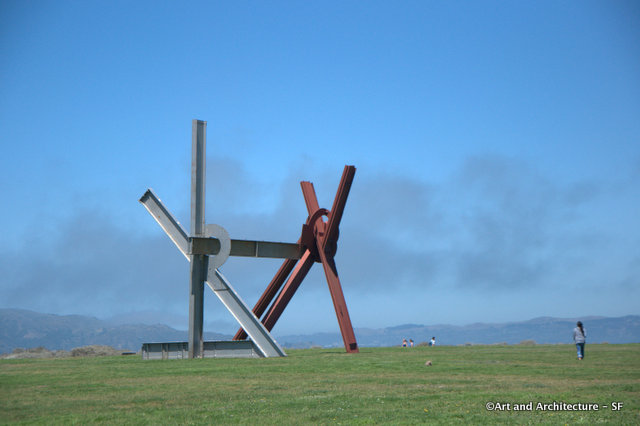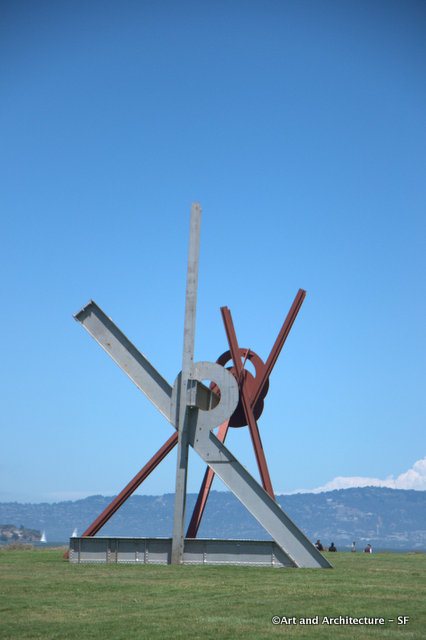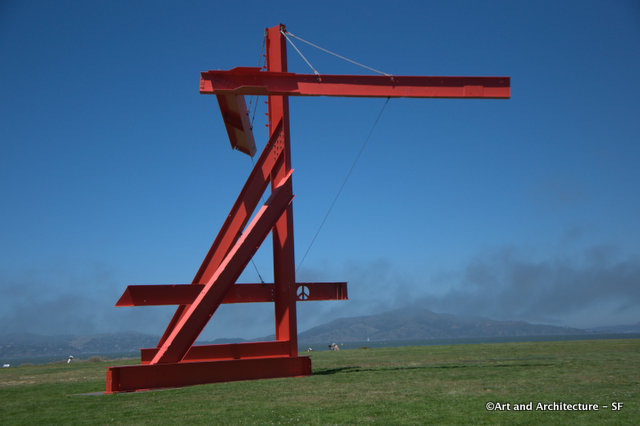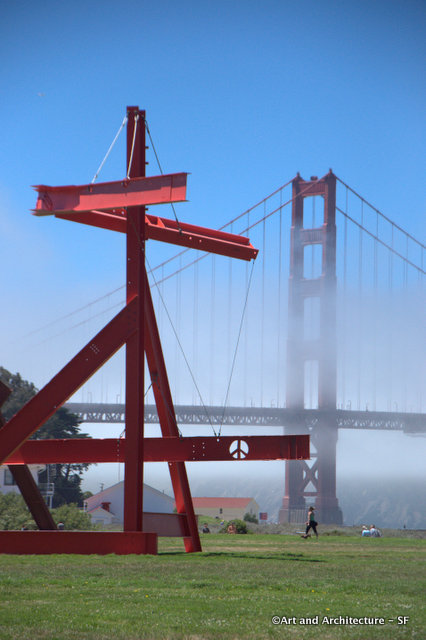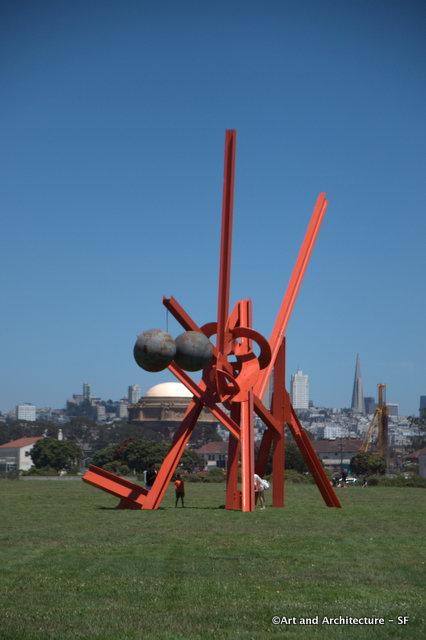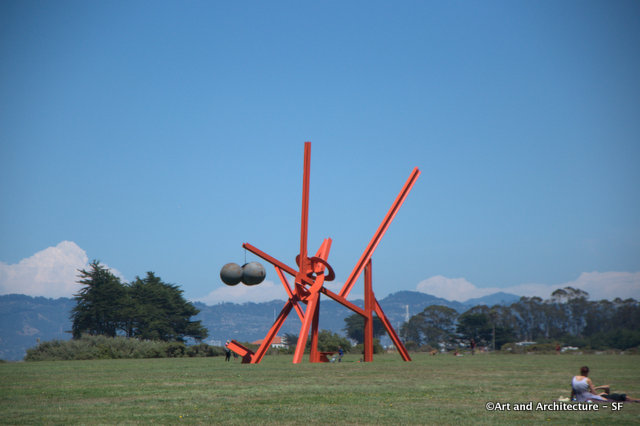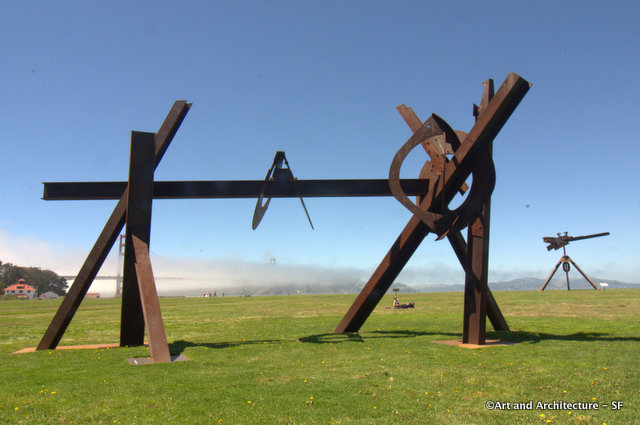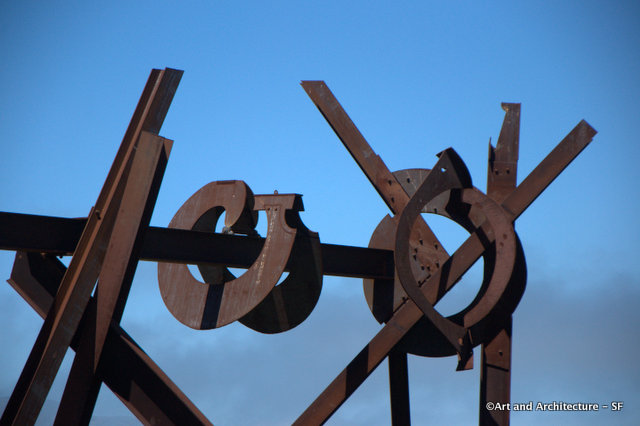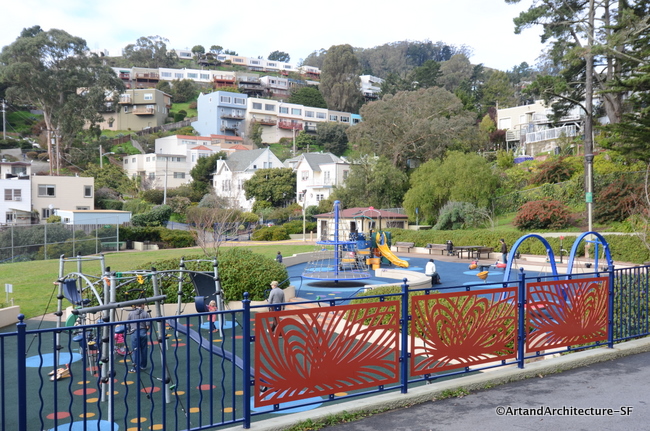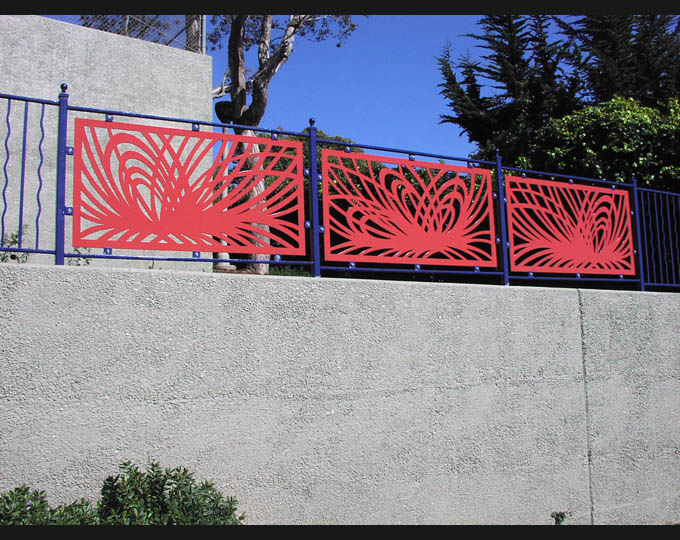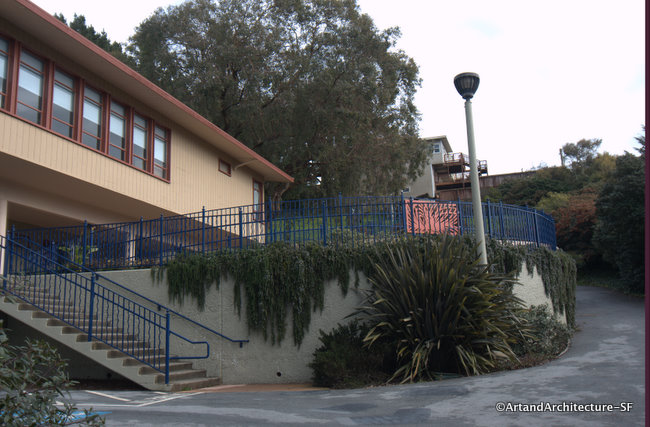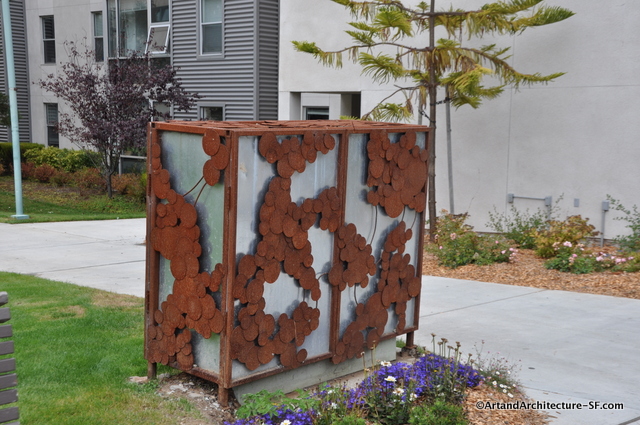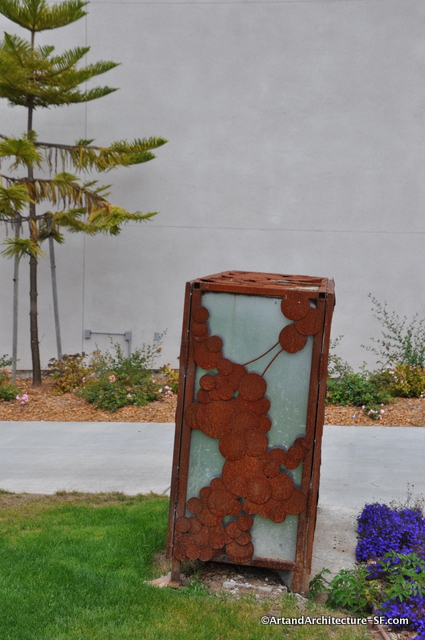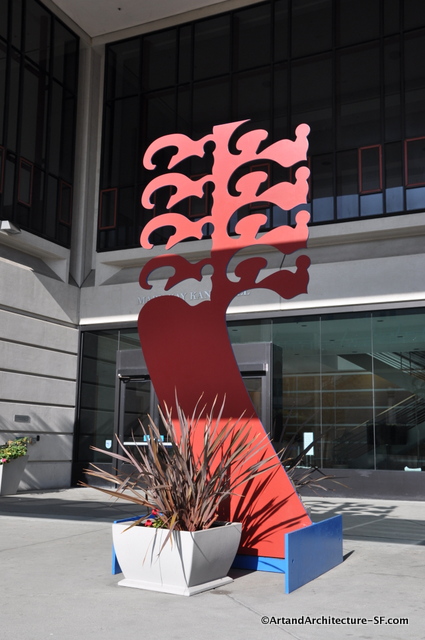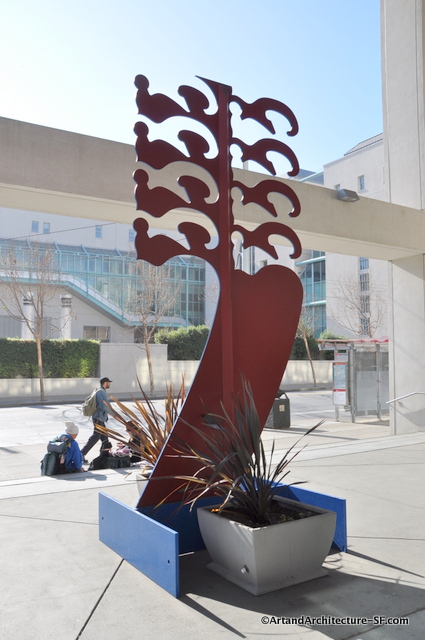SFMTA Islais Motor Coach Facility
Sitting on Islais Creek in the new Shoreline Park
Indiana Street and Ceasar Chavez
Bayview
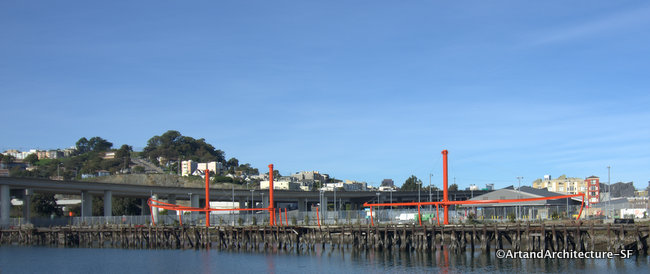
This 340′ Long Steel Sculpture is an abstract representation of the old Liberty Ships that were built in the Shipyards of this neighborhood.
The sculpture is by Nobuho Nagasawa a New York based artist. Nobuho had this to say on ArtNet
My work ranges from site-specific projects to installations and public art. I create an interactive space that is informed by the actual place — its history, people and spatial narrative. This approach requires detective-like investigation and quasi-archeological research, exploring sociological and psychological aspects of each site. Immediate physical and social context influences the form, content, and choice of materials and media.
I see my artist’s identity as inevitably “hybrid” – in my case, part sculptor, journalist, poet, architect, and urban designer. Materials and methodology follow upon the necessary diversity of evolving concepts as a project reveals its conditions. I see this process as an excavation of meanings – cultural, geopolitical, social, personal – that lie hidden within the materials themselves. By revealing personal memories, collective histories, unacknowledged myths, and contradictory issues, I try to open up key social and personal reserves that can galvanize public interaction. Art, after all, has the power to deconstruct the blockages of social energy and serve as a catalyst to new vision and public self-discovery. My goal is to create artwork that provokes and revives a site and wakes people up to the poetry of place.
I am intrigued by the sense of scale, both human and civic, and how relatively small change can enhance private experience within the public setting. A truly livable space should stand the test of time. It spurs social communication and inspires reconstruction. When history is brought to the surface through public art, it can serve as source for the renewal of cultural identity and the evolution of social values.
My goal is to create works that attract people to possibility where and as they live. The development and realization of art in public is a dialogue with a place and its time – land and substance, its past, its people, the future they create – made new, immediate, and somehow timeless.
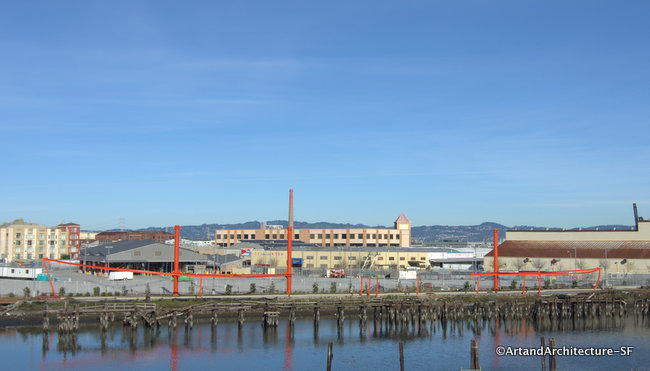
Based in New York City since 2001, Nobuho Nagasawa was born in Tokyo, and raised in Europe and Japan, and received her MFA at Hochschule der Künste in Berlin. She came to the United States as a visiting scholar through the invitation of California Institute of the Arts in 1986, where she studied visual art, critical theory and music.
This piece was commissioned by the SFAC for $750,000 in the 2008-2009 budget year.

 Ilana Spector has a background in civics and law and brings a multidisciplinary approach to creating public artwork. She studied government and diplomacy, attending the London School of Economics and graduated from Georgetown University before attending UCLA School of Law. Ms. Spector joined Mr. Grieve in 2006 to complete an award-winning public sculpture. She studied drawing and painting at the College of Marin.
Ilana Spector has a background in civics and law and brings a multidisciplinary approach to creating public artwork. She studied government and diplomacy, attending the London School of Economics and graduated from Georgetown University before attending UCLA School of Law. Ms. Spector joined Mr. Grieve in 2006 to complete an award-winning public sculpture. She studied drawing and painting at the College of Marin.
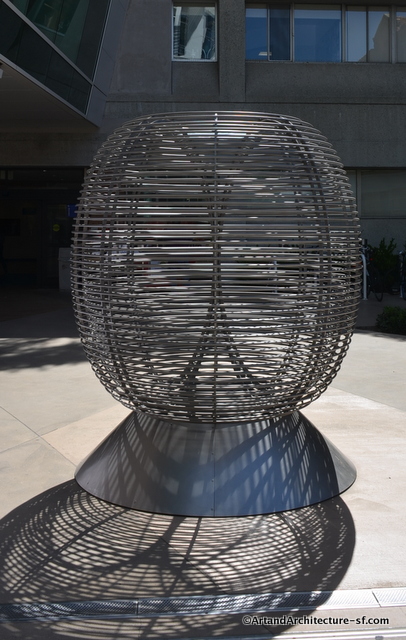 Titled Archipelago this piece is based on the concept of a river as a metaphor for life. It was created by
Titled Archipelago this piece is based on the concept of a river as a metaphor for life. It was created by 